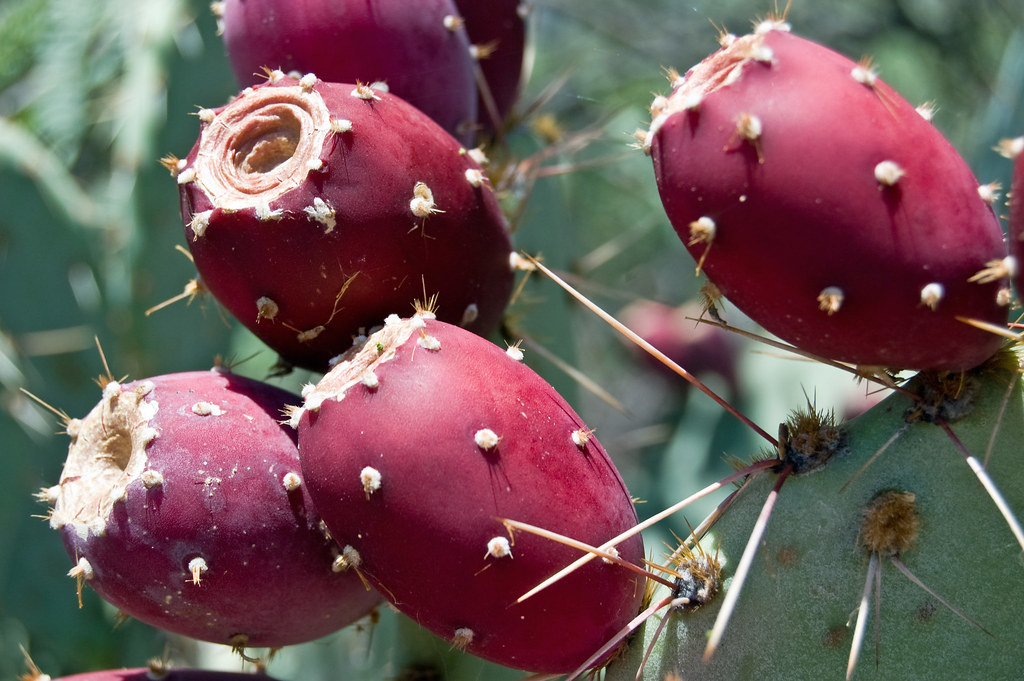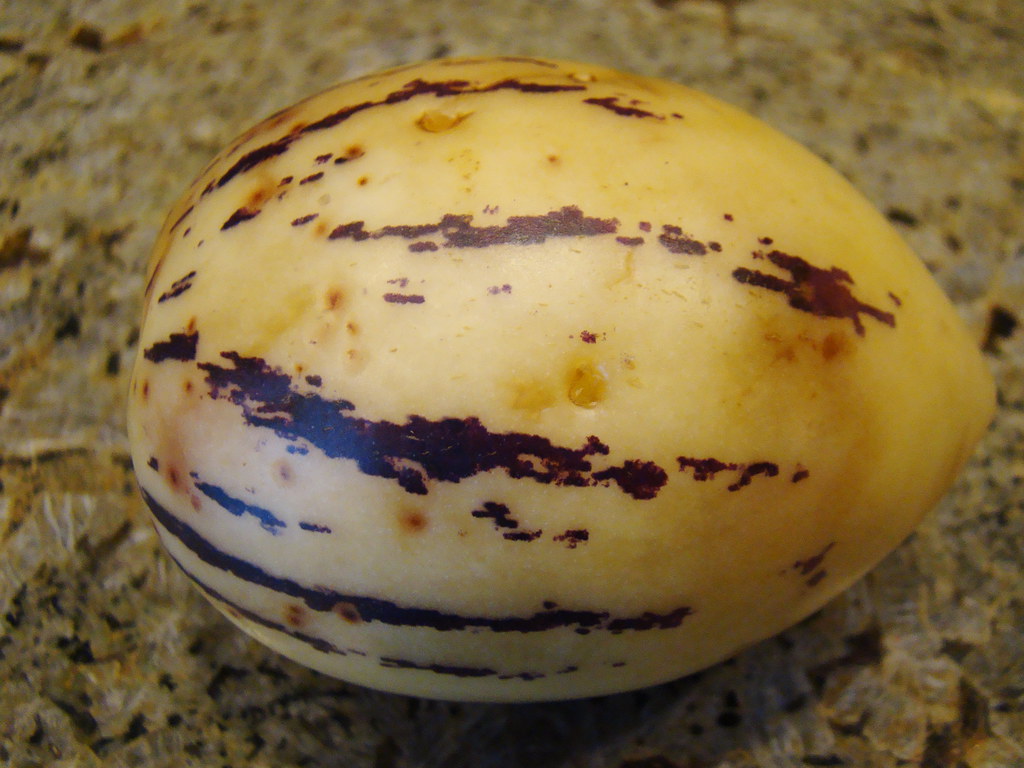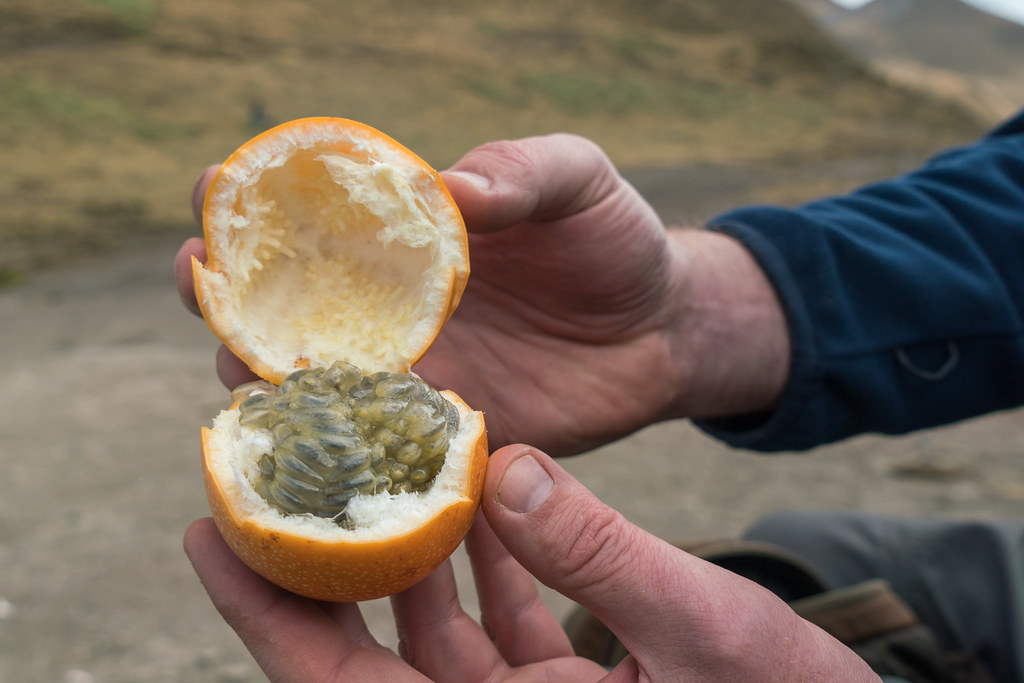My family trips to Ecuador were something I looked forward to every year. My grandma is a fruit and vegetable vendor at an enormous open-air food market in Azogues (a city in Ecuador). I used to put on my apron and accompany her to make sales. I loved walking past the many colorful fruits, cheeses, meats and candies that were there waiting to be bought. My grandma would give me different exotic fruits to try, and before long I knew the ones I loved.
I couldn’t wait until my next trip to Ecuador to buy the same exotic fruits my grandma gave me when I was younger. Knowing I can’t find most of these in the United States is a bittersweet feeling, because now I know I have to come back to this beautiful country to enjoy them.
1. Atun

Pronunciation: (a-toon)
Eating these bad boys require some skill. First, you have to be careful of the needles shooting out of the fruit. I suggest using a kitchen tong or a cloth to hold them. By making a cut along the side of the atun you can take off the peel and start eating the sweet and juicy red fruit on the inside. They have tiny black seeds that you spit out. The cool thing is knowing that they actually come from a cactus, hence the needles.
2. Uvillas

Pronunciation: oo-vee-yaa
Uvillas are bright golden berries that are very popular in Peru and Ecuador. They come in these paper shells that you have to peel off, but often when you buy them they come already peeled. They are indigenous to the Andes mountains. They have tiny seeds that can be eaten and when opened they closely resemble a tomato with similar flesh. You can just pop these into your mouth for a sweet and tangy snack
3. Pepino

Pronunciation: Peh-pee-no
Pepinos have a teardrop shape – its name translated from Spanish means “cucumber.” There is no pit when opened, just smaller seeds in the middle that are edible. It is a juicy fruit and tastes as sweet as a melon but also has a cucumber flavor. It is a delicious fruit that can be sliced or bitten into like an apple. When it ripens, you can tell because it gives off a sweet smell.
4. Tomate de árbol

Pronunciation: Toh-mah-teh Deh Ar-bowl
The literal translation of this fruits means “tomato from tree.” Tomate de árbol is a small fruit that comes from trees, hence its name. It is a fruit native to the Andes mountains. It can be eaten by first peeling off the skin, slicing it in half and sprinkling some sugar on top. It can also be made into juice, salsa, and other variations. Tomate de árbol has red flesh and is tangy and sweet.
5. Cherimoya

Pronunciation: Cherry-moy-yuh
The taste of the cherimoya is a mix of various fruits that creates an overall complex flavor. I love this fruit for its creamy flesh – cherimoya is popularly named “custard apple.” Some people taste a combination of strawberries, bananas, coconuts, and mangoes while others also taste pineapple and papaya. This fruit is truly a mystery, and has black almond-shaped seeds. It can be eaten with a spoon or made into a smoothie. Try it out for yourself to see which fruits you can taste.
6. Granadilla

Pronunciation: Gran-ah-diya
The shell of this fruit is particularly interesting: first off you have to crack it open, like an egg. Inside, there are edible seeds that are filled up to the brim. The seeds are sweet and are often compared in appearance to its cousin, the passion fruit. The difference is that the passion fruit has sour seeds. Granadilla seeds are crunchy and edible and the membrane that surrounds the seeds is tart. I highly recommend trying this fruit because the whole experience is truly unique.
All You Need Is Ecuador
Fruits hold a special place in my heart stemming from my grandma and the market days. Each of these exotic fruits reminds me how amazing Ecuador is with its diverse regions and rich culture. You’ll ace these makeshift pronunciations I made when you head on down to the fruit market, where the produce is fresh and the people are always nice (maybe because they want your tourist money?).


